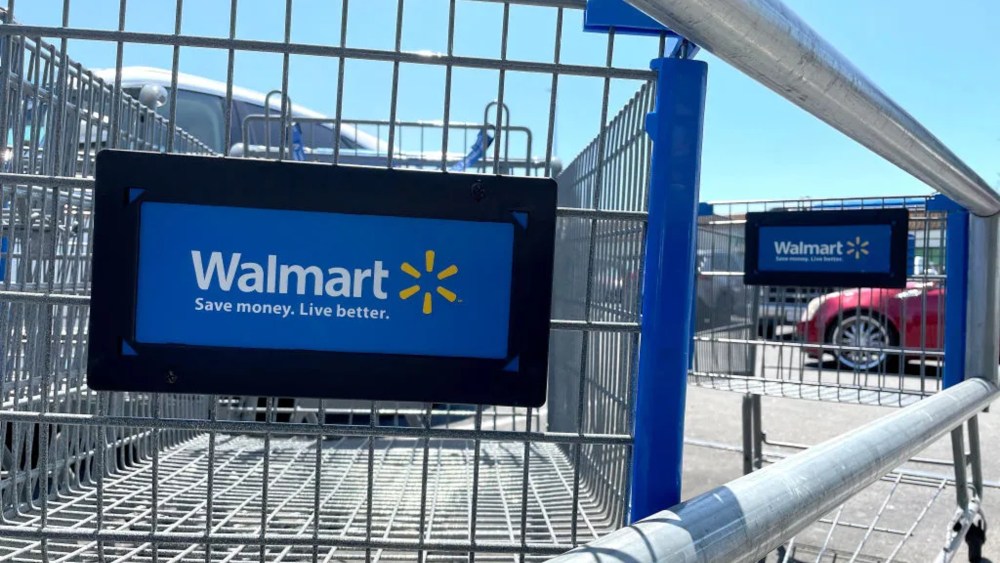Some rays of light broke out between the consumer storm clouds on Thursday.
Walmart Inc.’s second-quarter sales grew 4.7 percent, adding $7.4 billion to its already giant topline. And the Census Bureau reported that July retail and food service sales increased a seasonally adjusted 1 percent from June — a gain more than three times as strong as the 0.3 percent uptick economists projected, according to FactSet.
That, combined with inflation that’s back down to more tolerable levels and expectations that the Federal Reserve will start lowering interest rates this fall, seemed to open up room for a little more optimism.
You May Also Like
Investors were certainly feeling good and pushed the Dow Jones Industrial Average up 1.4 percent, or 554.67 points, to 40,563.06.
But the overall picture is still mixed.
According to the Census Bureau’s tally, apparel and accessories specialty stores saw a gain of 2.5 percent from a year earlier while department stores fared worse with a 0.3 percent drop.
And with unemployment now on the rise, the geopolitical world still scrambled and a U.S. election in the offing, retailers and brands have found a favorite new word to describe consumers — “choiceful.”
John David Rainey, Walmart’s chief financial officer, told analysts: “Customers continue to be discerning and choiceful, looking for value to maximize their budgets while leaning into seasonal celebrations. The pace of sales was largely consistent by month during the quarter.”
Likewise, Joanne Crevoiserat, chief executive officer of Tapestry Inc., which turned in better than expected quarterly results, said: “As we look at the consumer, we’re seeing consistency from what we’ve seen really in the last few quarters, and that’s a consumer that’s choiceful. What we see in the market is that innovation and emotion continue to win, and that puts heightened importance on brand execution and brand heat.”
If the text remained guarded, investors read-in a subtext that was more bullish, jumping into retail despite lingering concerns about the second half.
Among the stock gainers were Ulta Beauty Inc., up 11.2 percent to $365.80 after Berkshire Hathaway revealed it had taken a stake in the beauty retailer; Victoria’s Secret & Co., 9.8 percent to $24.37; Lululemon Athletica Inc., 6.7 percent to $256.55; Gap Inc., 6.7 percent to $24.22; Walmart Inc., 6.6 percent to $73.18; Abercrombie & Fitch Co., 5.9 percent to $162.05, and Tapestry Inc., 3.2 percent to $39.20.
Outside of Wall Street, the retail lesson seemed to be that there was room for companies that are on their game to do enough right and win.
At Tapestry, Coach gained ground last year and the company is trying to buy Capri Holdings to keep growing in the accessible luxury category. And at Walmart, the mass giant has steadily been taking a new angle on its business.
“Today’s Walmart is different. We are people-led and tech-powered,” said Doug McMillon, Walmart’s CEO. “Around the world, our customers and members continue to want four things: They want value, they want a broad assortment of items and services, they want a convenient and enjoyable experience buying them, and they want to do business with a company they trust. These four things are constant, but the way we provide them is changing and changing fast. The results we’re delivering are due to real progress across these dimensions.”
Fashion has been a part of that progress, as the company has spruced up its presentation and offering, revamping No Boundaries and other brands, while also welcoming third-party sellers into the fold online.
Walmart said sales in fashion, toys, hardlines and home on its digital marketplace all grew more than 20 percent during the second quarter.
Overall, Walmart’s second-quarter revenues grew 4.8 percent to $169.3 billion, with comparable sales in the namesake U.S. business rising 4.2 percent on top of a 6.4 percent gain a year earlier.
Adjusted profits rose 9.8 percent to 67 cents a share, 2 cents better than the 65 cents analysts forecast, according to Yahoo Finance.
And the company is growing more comfortable about the year ahead.
Annual sales are now expected to increase by 3.8 percent to 4.8 percent, up from the 3 percent to 4 percent gain initially forecast.
Although Walmart is charging ahead, not every retailer has found the going so smooth.
Dillard’s Inc., another Arkansas-based company, reported that second-quarter sales fell 4.9 percent to $1.5 billion from $1.6 billion as net profits sank 43.3 percent to $74.5 million from $131.5 million.
“We are disappointed with our weak performance in the second quarter,” said CEO William T. Dillard 2nd. “While the consumer environment remained challenged, our expenses were up, squeezing our profitability. We are working to address this.”
More of the same will no doubt be heard as other retailers report quarterly results this month.
But Dillard’s has something most big retailers don’t.
While the company is public, it is controlled by the Dillard family, which has had the retailer hold on to its real estate (Dillard’s owns 246 of its 273 stores) and build up a powerhouse balance sheet.
“We ended the quarter with over $1 billion in cash and short-term investments,” Dillard’s said.
That gives Dillard’s a little extra space to get expenses into line with sales.



